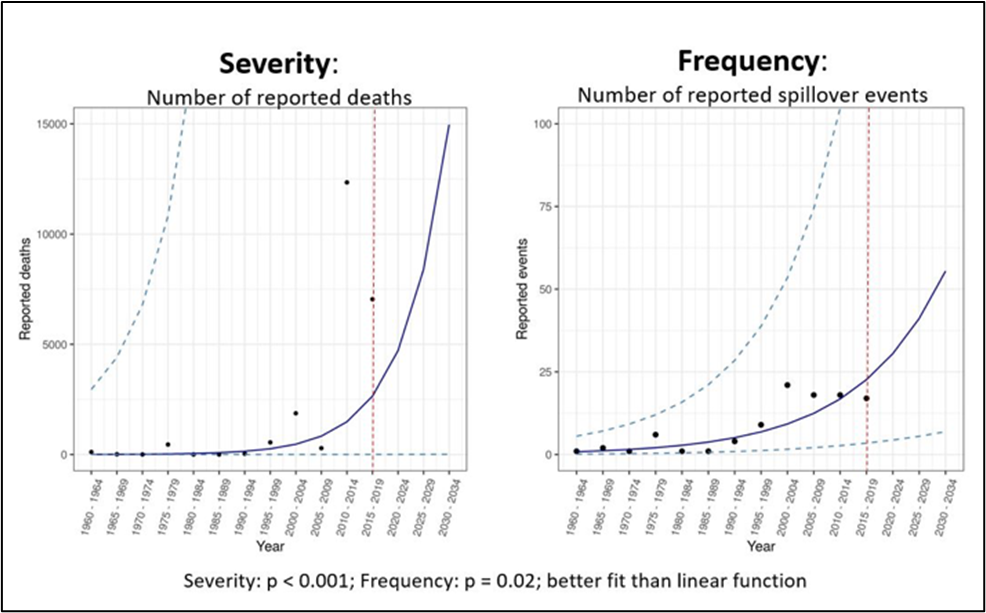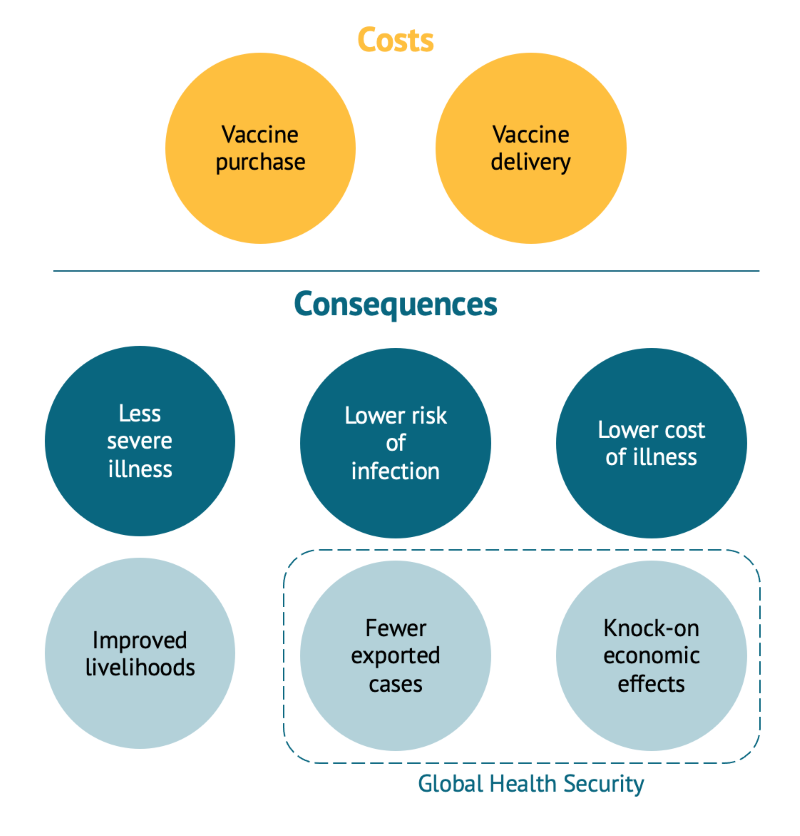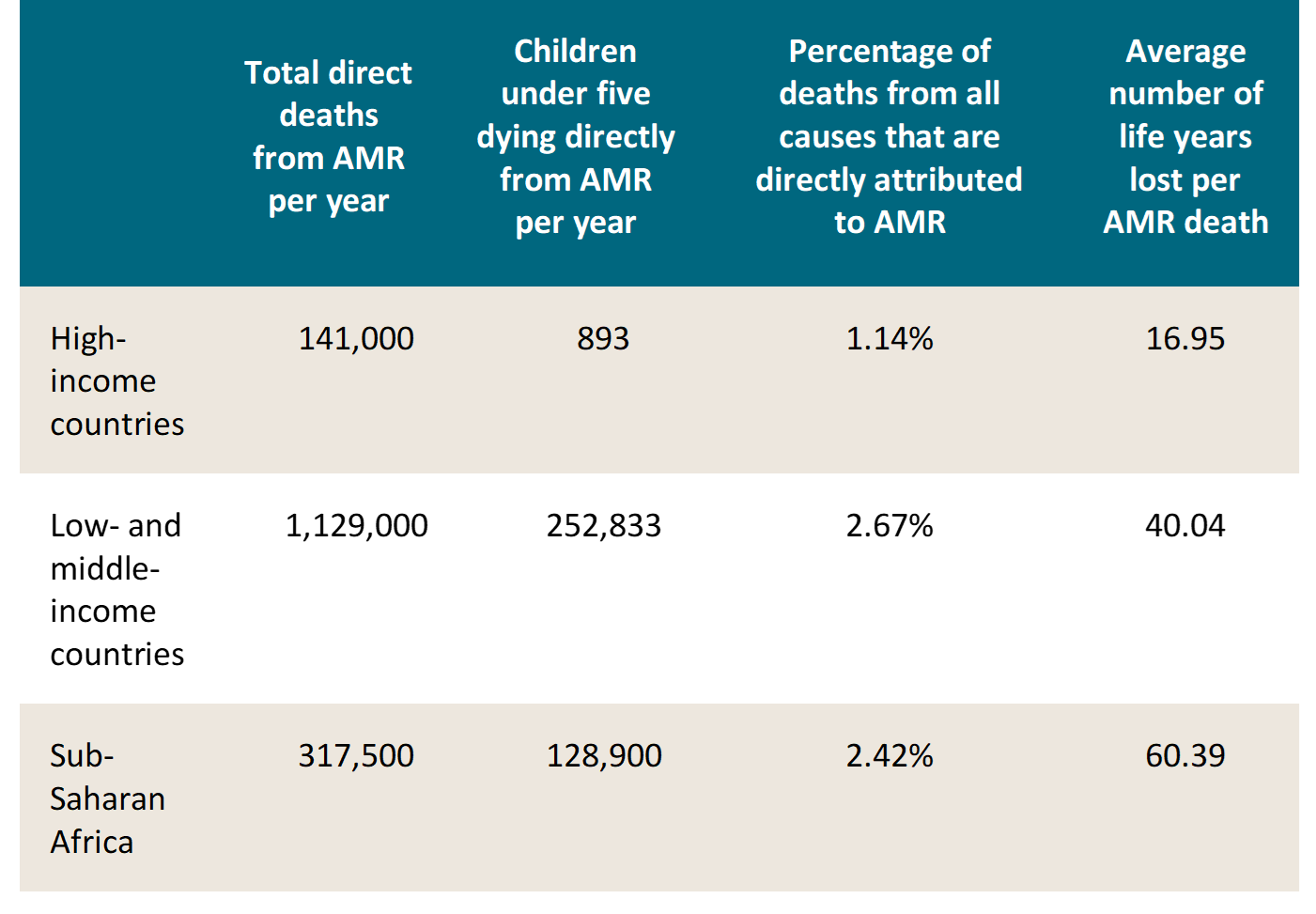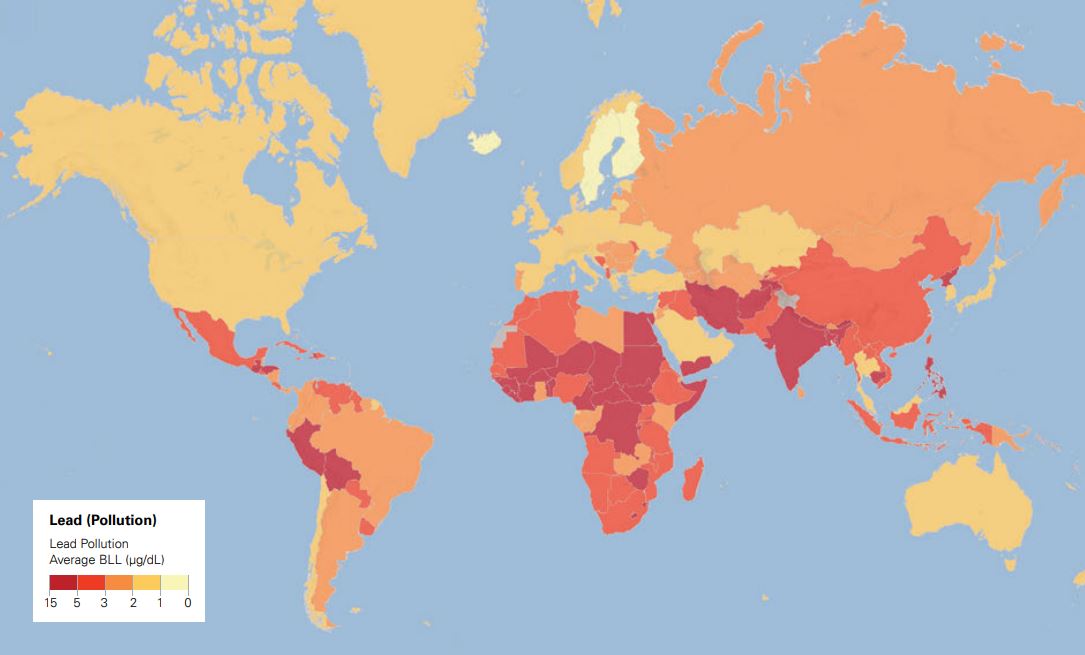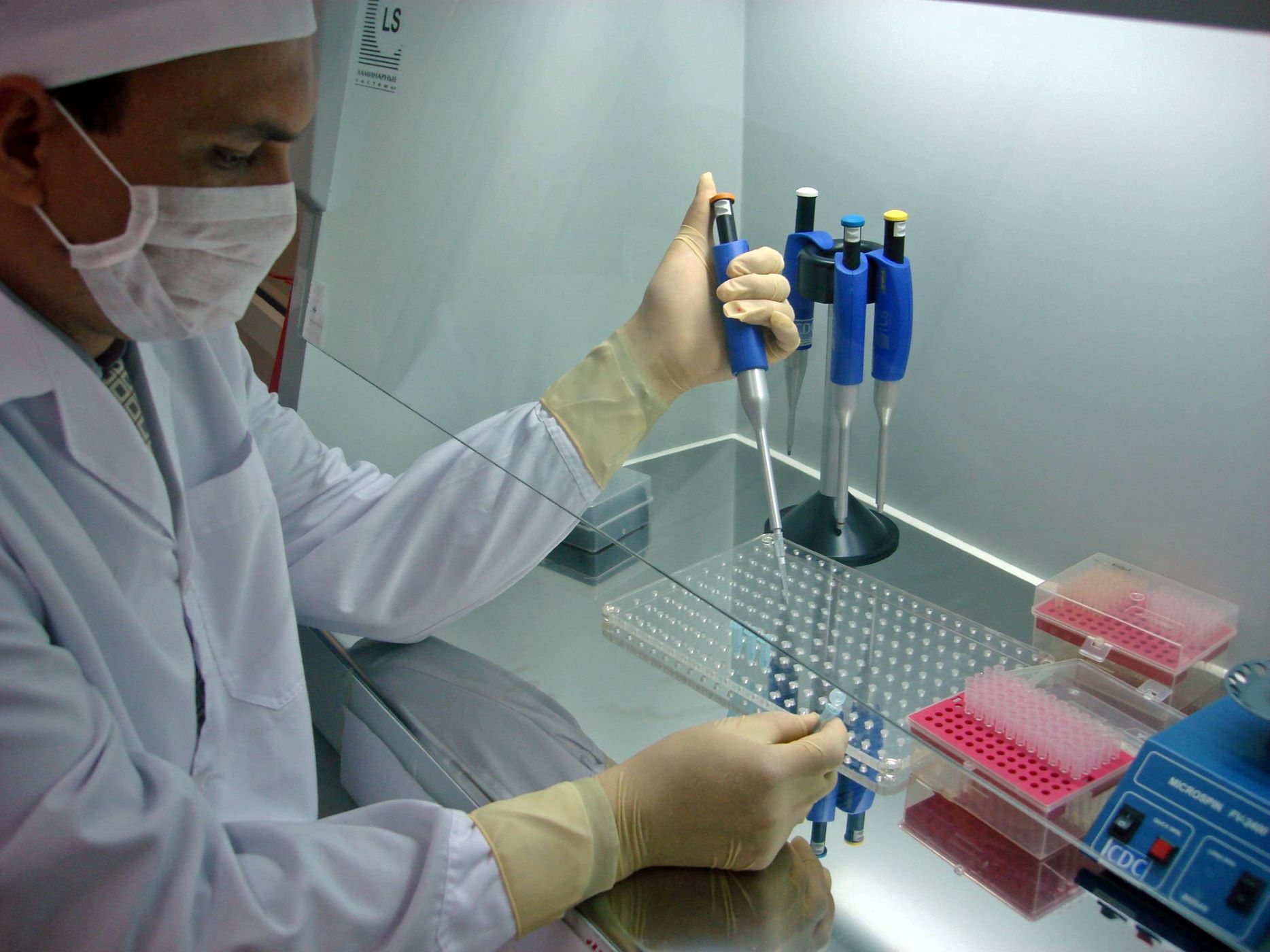World Health Day 2022 is centered on “our planet, our health,” invoking the interconnected importance of pandemic risks, pollution, climate change, and shifting disease burdens. We are using this moment to shine a light on innovative solutions for many of the world’s most pressing global health problems, from pandemic preparedness financing to priority-setting for universal health coverage. From all of us at CGD, we wish you a happy #WorldHealthDay.
1. Finance global public goods to mitigate climate change and lower the threat of future pandemics
Amid the ongoing climate crisis and over two years into COVID-19, funding for global challenges that transcend borders, like outbreak response and climate change mitigation, is grossly insufficient. With biodiversity losses and increased spillover of infectious disease from wildlife to humans, the frequency and severity of pandemic threats is steadily increasing.
Trends in frequency and severity of spillover events
According to recent modeling, there is a 47 to 57 percent chance of another global pandemic as deadly as COVID in the next 25 years. Collective action through a “One Health” approach and increased financing for global public goods are needed to address global problems like pandemic and climate risks. Stay tuned for more from CGD on the role of multilateral development banks in advancing global public goods in the coming months.
More on pandemic preparedness:
- One Health: Placing Human, Animal, and Environmental Issues at the Heart of COVID-19 Recovery in the Asia-Pacific Region
- A Bank for the World: A Call to Arms on the Sidelines of the World Bank’s Annual Meetings
- The COVID-19 Vaccine Rollout Was the Fastest in Global History, but Low-Income Countries Were Left Behind
2. Elevate more health for the money as a key lever to fight COVID-19, expand essential health services, and prepare for future health shocks.
Whether deciding which COVID-19 vaccines to buy, which health services should be publicly funded to achieve UHC, or how to invest in systems to track novel pathogens, policymakers lack information on the comparative cost effectiveness of their options. To fulfill UHC goals, health systems must strengthen regional and country capacity to generate and use health technology assessment and related economic evaluation so that they can prioritize the health interventions and products with the greatest impact. To this end, the International Decision Supportive Initiative (iDSI) network and its secretariat based at CGD help countries prioritize scarce resources for the best uses.
Summary of costs and consequences to consider in COVID-19 vaccine HTA
Source: “Who Gets a COVID-19 Vaccine and Who Pays? The Need for Economic Analysis,” February 2021.
More on priority-setting for health:
- Collecting Evidence to Inform COVID-19 Vaccine Procurement Decisions
- Moving Toward Smarter Health Spending: The Role of the Global Financing Facility
- Africa CDC’s Health Economics Unit: More Important than Ever
3. Drive health innovation development and access to save and improve lives around the world
For millions of people in low- and middle-income countries, life-saving medicines and other health products remain out of reach because policies and incentives to drive their development and delivery are lacking, especially for antibiotics. People living in LMICs are 1.5 times more likely to die from antimicrobial resistance than those in high-income countries.
Burden of AMR across regions
Source: “Global burden of bacterial antimicrobial resistance in 2019: a systematic analysis,” The Lancet, February 2022.
Greater investment in research and development that primarily benefits LMICs is needed. New financing and policy approaches can kickstart pharmaceutical research, spur competition, promote quality assurance, and increase supply chain efficiency. Specifically, pull financing mechanisms like Advance Market Commitments can help motivate investment in high-value innovations.
More on health innovation, procurement, and manufacturing:
- Policy Actions for the US Government to Accelerate Access to Oral Antivirals for COVID-19 in Low- and Middle-Income Countries
- What We’re Hearing: Potential Pull Mechanism Use Cases for High-Value Global Health Innovation
- Expanding Emergency Vaccine Manufacturing Capacity in Latin America and the Caribbean
- African Vaccine Manufacturing with EU support: Addressing Demand Uncertainties is Crucial for Success
4. Eliminate lead poisoning as a threat to all children
Approximately 800 million children around the world have dangerously high levels of lead in their blood—harming their health, stymying their learning, and preventing them from reaching their full potential.
Children’s average blood levels by country(μg/dL)
Source: UNICEF and Pure Earth, 2020.
But with better research, more funding, and policymaker prioritization, the world could dramatically reduce—and eventually eliminate—lead poisoning as a threat to all children.
CGD’s new initiative on global lead poisoning seeks to generate new evidence on the educational and economic costs of lead poisoning in LMICs and mobilize support for mitigation and remediation. Watch this space for more over the coming months.
Disclaimer
CGD blog posts reflect the views of the authors, drawing on prior research and experience in their areas of expertise. CGD is a nonpartisan, independent organization and does not take institutional positions.


